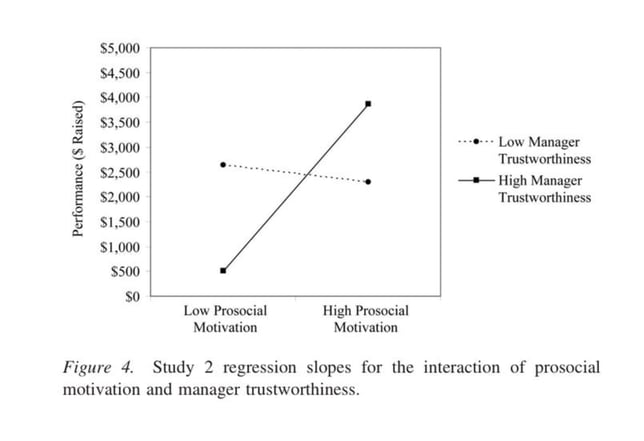11 Need to Know Employee Motivation and Engagement Statistics
TABLE OF CONTENTS
Motivation and engagement aren’t just buzzwords. Their absence has implications on the success of a company’s workforce, and by extension - the company itself.
With that in mind, here are the 11 must read statistics for any HR lead, operations manager or general manager to ensure your workforce is performing at their very best.
Why is motivating and engaging your people so important?
1. Teams that are highly engaged result in 21% increased business profitability
When your people are engaged they are enthusiastic about what they do. They are driven, and keen to show up to each morning in the first instance, lowering absenteeism.
Their output is greater and of a higher quality which correlates to improved customer relationships and higher customer ratings. They feel an emotional attachment to their workplace and are 59% less likely to churn.
All these factors combined result in a tangible improvement in a business’ profitability.
2. Engaged employees are 87% less likely to leave their companies
When people are engaged they feel invested and emotionally tied to a company. They are brand evangelists by nature and enjoy stronger relationships with colleagues and customers alike.
3. Engaged employees perform 20% better
“Performing better” means that engaged individuals:
-
Search for ways in which to carry out their job more effectively
-
More often help colleagues with heavy workloads
-
Put themselves forward for things that fall beyond the remit of their role
These trends were identified in a global study of 50,000 employees.

What contributes to employee motivation and engagement?
4. People who trust their managers are more motivated
Those with ‘high manager trustworthiness’ displayed improved performance - they earned more.

They also show higher prosocial motivation, which is the desire to protect and promote the well-being of others.
5. 43% of highly engaged employees receive feedback at least once a week
In their State of the Global Workplace study, Gallup found managers are the key to unlocking workplace happiness.
Managers have huge influence over employee engagement - they can be responsible for up to 70% of a managee’s job satisfaction. 39% of employees cite their immediate supervisor as the reason for their departure.
Among managers, the best at engaging employees are those who approach management as a mentor rather than a ‘boss’ (a word that carries negative, authoritarian connotations) and, notably, provide “ongoing feedback and communication”.
6. Employees that feel heard are 4.6 times more likely to perform at their very best
While feedback is invaluable, it won’t suffice as a one-way stream of communication.
Employees feel empowered when instilled with a voice to speak up with. If you’re currently speaking at rather than with your people, turn the monologue into a dialogue.

But despite the benefits of having motivated and engaged employees…
7. Worldwide, only 15% of employees are engaged
The global workforce faces a crisis of disengagement.
Though disengagement is a borderless trend, there is some variation in engagement between countries and continents. For instance, people in Western Europe, one of the “world’s most economically developed regions”, are 5% less engaged than their North American counterparts. Americans take the lead for most engaged workforce, at 34%.

8. Having disengaged employees costs up to $550 billion a year
Gallup estimates that disengaged employees cost the U.S. economy $450 - $550 billion per year in terms of lost productivity. When an employee isn’t aligned with your company, mission and vision they aren’t motivated to perform at their very best and don’t drive innovation.
9. 44% of employees report feeling burned out ‘sometimes’
Burnout and employee disengagement are intrinsically linked. Chronic work stress leads to disengagement. And once an employee is chronically stressed (burned out) they are 63% more likely to take a sick day, increasing absenteeism.
In Germany, burnout costs businesses 9 billion euros each year.
10. 17% of the global workforce is ‘actively disengaged’
Actively disengaged employees differ from merely disengaged employees. Disengaged employees are indifferent, clock-watch and enter ‘auto-pilot’ as they carry out their day-to-day tasks, stifling innovation and Workforce Success.
But an actively disengaged employee is an active threat to your company - they are discontented and externalise their discontent. This can take shape in a number of ways, from spreading negativity, to more on-the-job accidents, to contribution to theft, or trying to undermine their engaged peers’ efforts.
In Germany, the number of engaged vs. actively disengaged employees is the same (15%). This means that for every productive, innovative employee there is a disruptive one that undoes their efforts.

11. 39% of employees feel underappreciated at work and 77% would work harder if they were more recognised
Creating a recognition-rich culture is essential for keeping employee motivation, morale and productivity high. Employees who feel like their efforts are repeatedly overlooked grow resentful.
The takeaway
The ripple effect of having engaged and motivated individuals is huge. Its importance can’t be understated - it results in real, material differences to your bottom line.
An engaged, motivated workforce is the life force of your company - it sits at its very heart. And the micro-success of every individual is tied up in the macro-success of the organisation, or as we know it - Workforce Success.
Join 10,000+ frontline leaders
Subscribe to ‘Training the Frontline’ and get weekly insights sent straight to your inbox.

